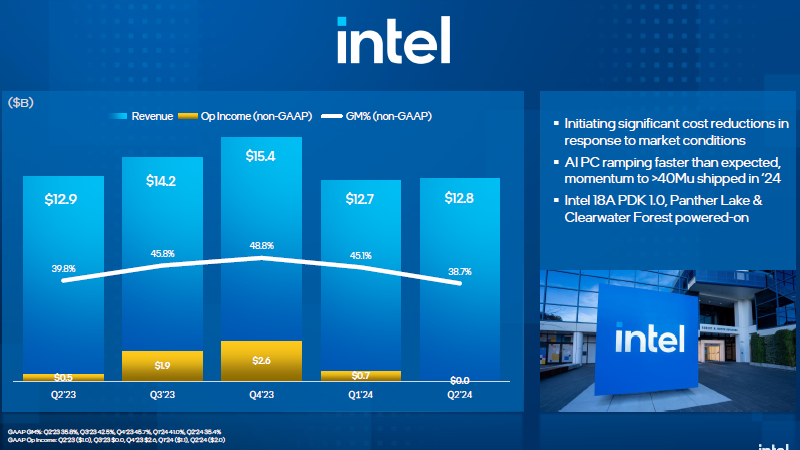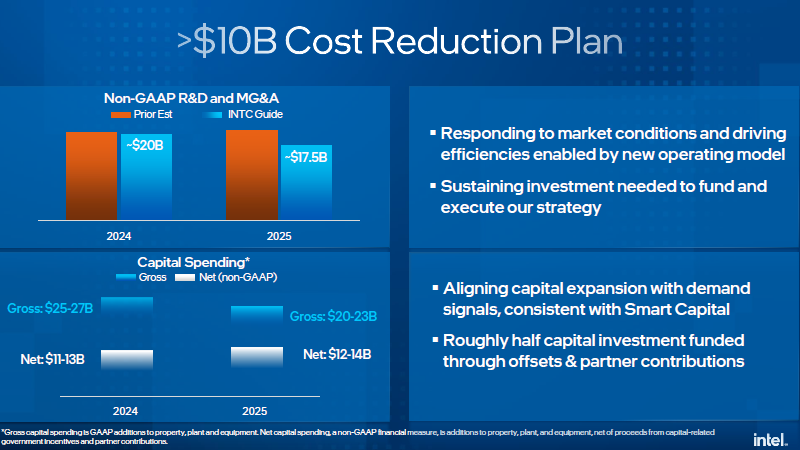An important element of Intel’s quarterly report this week was the announcement of intentions to cut 15,000 employees, which was already discussed at the rumor level the day before. The workforce reduction of more than 15% is part of Intel’s medium-term plan to save material resources. By the end of 2025, the company hopes to save $10 billion for higher priority purposes.

Image source: Intel
As The Verge notes, Intel’s dominant downsizing target is 15%. This means that out of 125,000 active employees of the parent corporation and its divisions, up to 19,000 people could lose their jobs by the end of next year. The reductions will begin already in this half of the year, the bulk of them should take place before the end of the current period. “We do not do this lightly, we have carefully assessed the impact these steps will have on the Intel family. These are difficult but necessary decisions,” commented the company’s CEO, Patrick Gelsinger, on the upcoming staff reductions.
Savings will not be limited to personnel costs. Every year until the end of 2026, the company will reduce spending on marketing, research and development. Capital expenditures this year will be reduced by more than 20% from the originally planned level. Optimization will be carried out for all ongoing projects and equipment purchases. Operating expenses this year will be reduced by $20 billion, next year their savings will reach $17.5 billion, and in 2026 they will also decrease. At the same time, Intel plans to retain the opportunity to invest in projects that are truly important for its own development strategy.
Intel expects to keep capital expenditures for the current year in the range of $27 to $25 billion, and partly this reduction is dictated by expectations of weaker demand for the company’s products in the second half of the year. Taking into account the availability of subsidies and the attraction of funds from partners, Intel’s own capital expenditures at the end of this year should fall within the range of $11 to $13 billion.

Next year it is planned to allocate a total of $20 to $23 billion for capital expenditures, with the company’s own funds required from $12 to $14 billion. In addition, the company plans to reduce fixed costs transferred to the cost of production by $1 billion next year. Intel will stop paying dividends next quarter. All this together will allow the company to reduce its costs by $10 billion by the end of 2025.
In an address to Intel staff, the CEO regrettably admits that the company’s revenue has not lived up to expectations for its growth, and the timely release of new products and the development of new technologies in this regard have not yet paid off. Even the upcoming launch of the Lunar Lake family of processors on the market will not be a catalyst for positive changes in the dynamics of financial performance, as Intel believes. This is partly due to the fact that the crystals for Lunar Lake production are mainly processed by TSMC, and Intel itself cannot actively influence the cost of products of this family. Moreover, these processors require memory integrated on the substrate, which is also purchased externally. Panther Lake processors, which the company will produce independently using Intel 18A technology from the second half of next year, will become widespread only in 2026.
In the PC and data center segment, Intel’s business continues to remain profitable, and only the decision to separately demonstrate Intel Foundry’s revenue and losses spoils the reporting. This division generated the bulk of the company’s losses in the first and second quarters of this year, but management is hopeful that the worst of it will be behind us once 2024 ends.